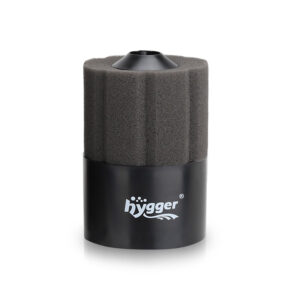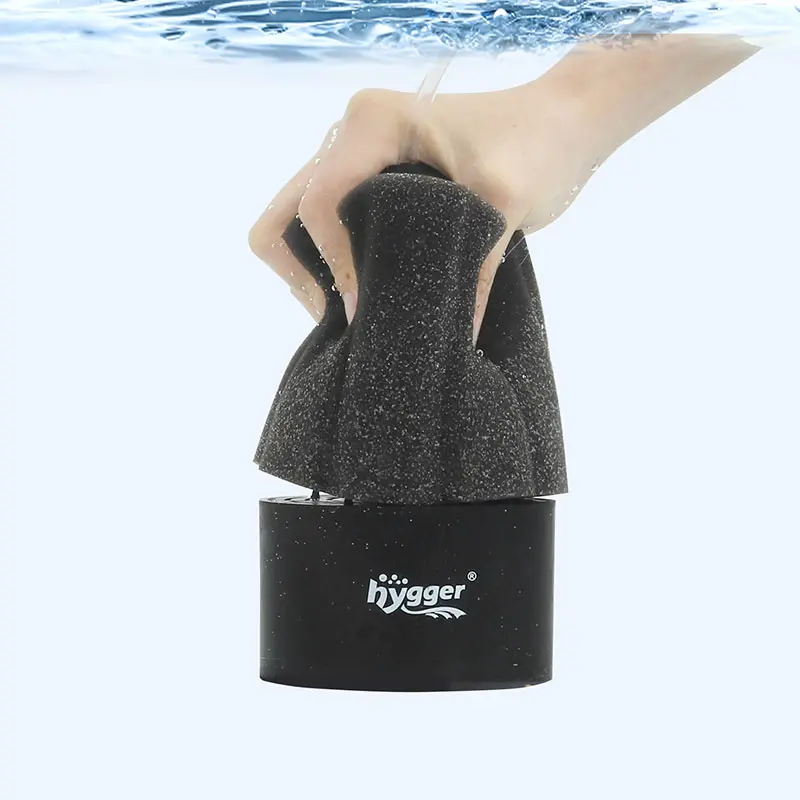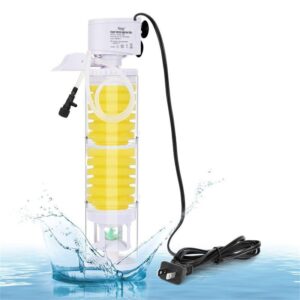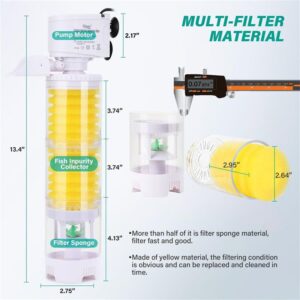Filtering and Purifying Water with a Sponge Filter
The fish need to have a place to survive in a healthy aquatic environment. This consists of not only water filtration but also cleaning and securing the water from being contaminated for the fish. It’s important to know how to filter aquarium water and why a sponge filter is important to keep salt and freshwater aquariums clean.
This article will discuss why water filtration is crucial for keeping saltwater and freshwater aquariums clean. In addition, we will also learn about the biochemical sponge filter used in aquariums like the Hygger 120 model the role it plays in water filtration, and how it purifies fish tank water.
What’s more, we will present you with some good ways of spawning beneficial bacteria in the filters. Let’s start exploring this crucial part of aquarium care in detail.
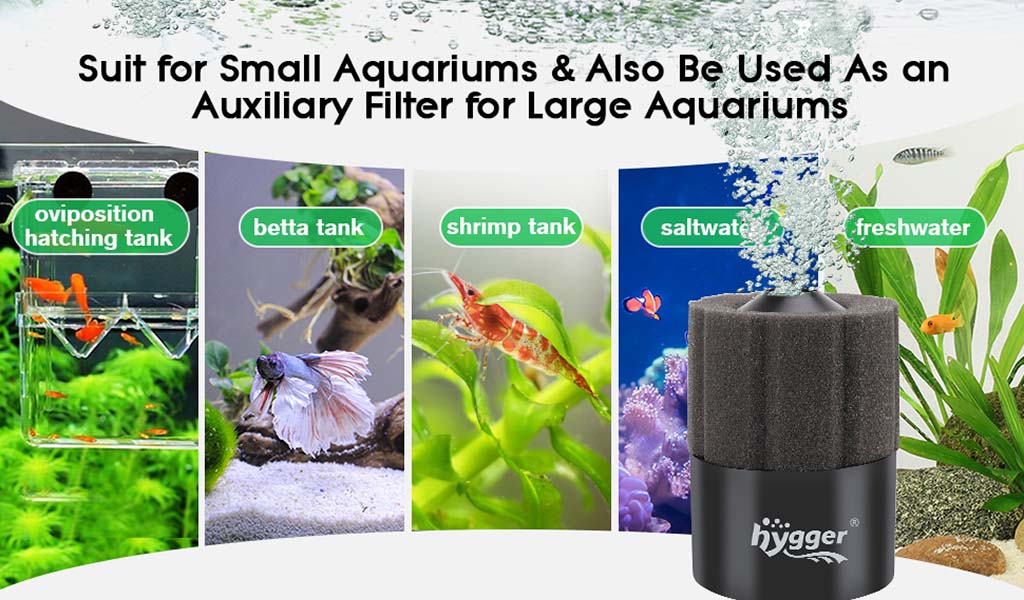
Why Does Fish Tank Water Need to be Filtered?
Fish tank water needs to be filtered for a few reasons:
1. Waste removal
Fish excrete wastes such as ammonia from their gills and urine. The quantity of ammonia should not interfere with the fish habitat if it is controlled. The drain gives way for the bacteria to grow and also maintains clean water in the system.
2. Beneficial bacteria
These bacteria help to convert ammonia into nitrates and nitrites, which is harmful to the fish. Unlike ammonia, which is toxic, nitrates can still have detrimental effects when their concentration is elevated. This filter becomes a habitat that gives the bacteria a safe zone to flourish and the cycle of nitrogen continues.
3. Water clarity
The filter’s main job is to sift out any floating debris such as leftover food and fish waste and hence, the water is kept clean.
4. Oxygenation
Some hang-on filters can create movement, by moving the water or bubbles, which can help with aeration. This facilitated the intensity of the interchange of oxygen from air and water, which is an important requirement for fish breathing.
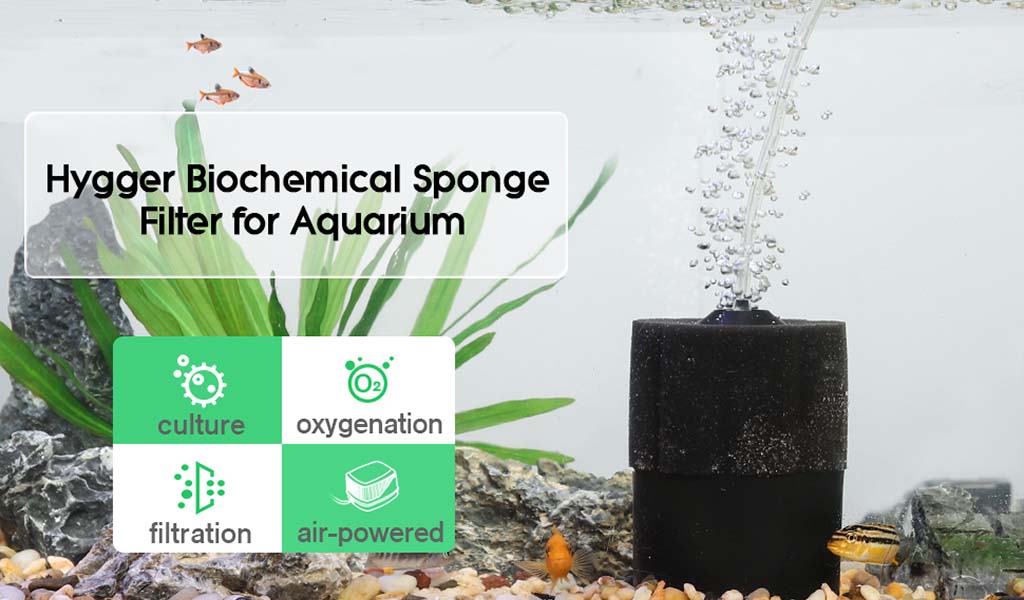
Water Purifier For Aquariums
Aquarium filters vary in their design, especially the biological sponge filters, aiming at maintaining a stable biological environment for your fish. Here’s how a biochemical sponge filter works in a fish tank.
The Role of a Biochemical Sponge Filter
The media inside a sponge filter is mineral and carbon, which together with beneficial bacteria accumulate in the filter medium, thus allowing both mechanical and biological filtration.
1. Mechanical Filtration
A sponge keeps the water clear by filtering floating debris such as leftover food and fish waste, which otherwise could be harmful to the already declining water.
2. Biological Filtration
Most notably, the sponge offers a spot for good bacteria to breed. The bacteria are most needed for the elimination of ammonia from water, which is harmful to fishes, into nitrites and then nitrates. Nitrates are relatively less dangerous; however, regular water changes are imperative to prevent them from reaching dangerous levels.
Sponge Filter Working Principle
- Air Pump: A biochemical air sponge filter relies on an air pump (Secondary unit to be purchased). The air pump inhales air through a tube, which is then pushed along a tube that runs to another part of the system.
- Air Stone: An airline connects the tubing to an air family or air diffuser at the bottom of the filter. The air stone is the reason for the formation of such small bubbles having air in them.
- Water Movement: The water is drawn through air bubbles, which help to create water currents in the filter and the tank as a whole. This approach of water movement helps it to circulate the water and maintain the amount of oxygen suitable for fish.
- Sponge Media: The water moves through the pores of the sponge media and traps the debris, causing the loss of favorable bacteria. The bacteria, which grow on the big surface area of the sponge, lead to a wide surface.
- Beneficial Bacteria: There is a process involved called the Nitrogen Cycle. The beneficial bacteria good bacteria take the ammonia present in the water and then convert it into nitrites and then into nitrates.
Benefits of Biochemical Sponge Filters
| Plain to set up, pick clean | The advancing water moving slowly won’t be troublesome to small fish as well as invertebrates |
| Works quietly moreover | Pleated filter cartridges rank on the lower end of filter-type costs |
Considerations
- Tank Size: Biochemical sponge filters are the most suitable for small to medium containers (usually under 70 gallons of water).
- Bioload: The efficiency of the filter, as it is often affected by the number and the size of the fish in the fish tank, receives a turn.
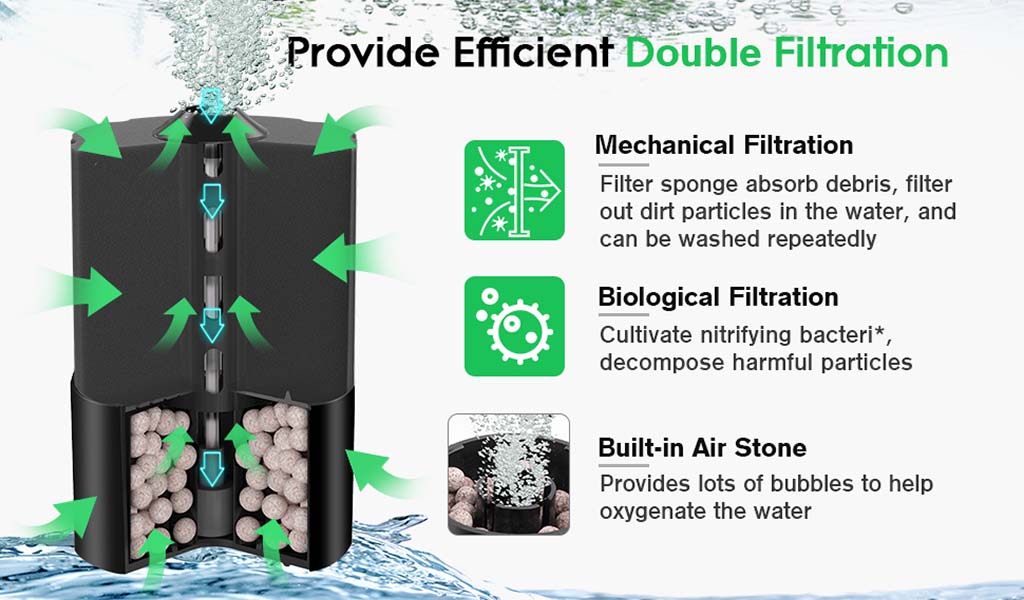
Filtering Water For Saltwater & Freshwater Aquariums
The Hygger 120 filter is an air-powered biochemical sponge filter, exclusively available on Hygger official website, designed for small and medium-sized freshwater and saltwater aquariums. It utilizes a combination of mechanical and biological filtration to keep your tank clean and healthy for aquatic pets.
Here’s how the Hygger 120 filter works:
1. Air Pump (not included)
This filter often uses a separate air pump (it’s in the accessories, so you’ll need to buy it as well) to operate. The pump sucks air while the tubing is connected to it.
2. Air Stone
The airline possesses a joint that holds to an air stone or air diffuser at the base of the filter. The air stone is the thing that bubbles the air into a single part of bubbles.
3. Water Movement
The inflow of gas bubbles makes the water pass through the filter and the tank. Fish waste and the decomposition of plants and other organisms generate organic materials that decompose, which creates the oxygen needed for fish to survive.
4. Filter Media
The Hygger 120 utilizes a two-step filtration technique, which is a detail with significant importance:
- Bio Sponge
Water flows across a replaceable sponge media and unwanted material like unused food and fish extras are stuck, providing biofiltration. - Ceramic Rings (Optional)
The filter is designed with a chamber for ceramic rings that can be utilized as a replacement for the filter media (or can be used in conjunction with it). The ceramic rings create extra bacterial habitats to where they multiply and increase the efficiency of the biological filter.
5. Beneficial Bacteria
The porous, sponge media and the ceramic stingers serve as a suitable medium for the multiplication of the beneficial bacteria. Hence, the presence of these bacteria can lower the ammonia content in fish water, making it safer for the fish. These are known as nitrifying bacteria, which take the ammonia to nitrites and nitrites to nitrates. The cycle interplay is extremely important for the aquarium’s sustenance, as it provides for healthy nitrogen circulation.

How to Breed More Beneficial Bacterial For Tanks
1. Use a Bio Filter
One of the best ways to increase the growth probability of beneficial bacteria is using a biofilter in your tank. This includes adding a filter or substrates, to provide surface area for bacterial colonization. If you are looking for an effective biofilter then Hygger 120 biomechanical sponge filter is the smart choice.
2. Add Live Plants
Furthermore, the incorporation of live plants with your tank also can serve as a host for the proliferation of good bacteria, as it provides them with a natural home to grow.
3. Monitor Water Parameters
The regular checking of ammonia, nitrite, and nitrate parameters in the water will indicate a good bacterial colony performing well. When these parameters are not the same, it could be a sign of bacterial overpopulation. In that case, it means doing partial water changes and adding some bacterial supplements as a solution.
4. Feeding
Moreover, your fish will get a balanced diet along with maintaining an optimal population of bacteria in your tank if you avoid overfeeding them. An excess food intake might result in more waste production, which, in turn, will be a source of disbalance in the accumulation of beneficial bacteria.
To Sum Up
This article concerned water filtration that ensured a correct habitat for fish organisms. In addition, we studied the positioning and functionality of a biological sponge filter such as the Hygger Model 120, regarding filtration and cleaning of water, whether of marine or fresh variety. Besides, there were also lessons on identifying helpful bacteria, and maintaining tanks besides providing a pleasant and healthy place for the fish to live.

